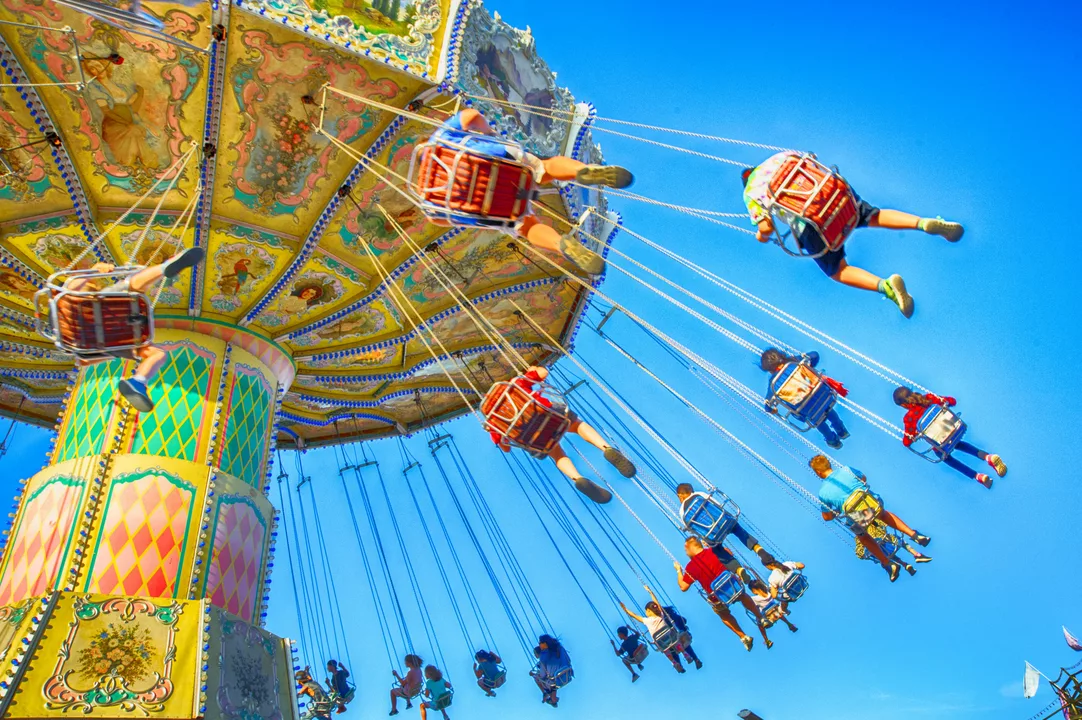Understanding Dizziness and Motion Sickness
Before we delve into dealing with dizziness and motion sickness during amusement park rides, it's essential to have a basic understanding of what these conditions are and why they occur. Dizziness is a sensation of lightheadedness, faintness, or unsteadiness, while motion sickness is a condition in which a discrepancy exists between visually perceived movement and the vestibular system's sense of movement. Simply put, it's when our bodies and brains can't agree on what's happening around us.
Amusement park rides often create these sensations, as they involve rapid changes in movement, direction, and speed. This can confuse our bodies, leading to dizziness and motion sickness. Now that we have a better understanding of these sensations, let's explore some ways to deal with them during amusement park rides.
Preventing Motion Sickness Before It Starts
One of the best ways to deal with motion sickness is to prevent it from happening in the first place. Here are some tips to help you avoid feeling sick during your amusement park visit:
- Choose rides wisely: Opt for rides that have slower, smoother motions and avoid those with rapid changes in direction or speed.
- Eat lightly: Consuming a small meal or snack before riding can help settle your stomach. Avoid greasy, heavy, or spicy foods that may exacerbate motion sickness.
- Stay hydrated: Dehydration can make motion sickness symptoms worse, so be sure to drink plenty of water throughout the day.
- Take breaks: Give your body time to adjust between rides by taking breaks and walking around the park.
- Consider over-the-counter medications: Some people find relief from motion sickness by using over-the-counter medications like Dramamine or Bonine. Speak with your doctor or pharmacist before taking any medication.
Techniques to Minimize Dizziness and Motion Sickness During Rides
Even with the best prevention efforts, you may still experience some dizziness or motion sickness during amusement park rides. Here are a few techniques to help minimize these sensations while on the ride:
- Focus on a fixed point: Pick an object in the distance and try to keep your eyes on it as the ride moves. This can help stabilize your vision and reduce feelings of disorientation.
- Breathe deeply and slowly: Taking slow, deep breaths can help calm the body and reduce motion sickness symptoms.
- Hold onto safety bars or handles: Gripping onto the ride's safety features can help stabilize your body and minimize the sensation of dizziness.
- Close your eyes: If all else fails, closing your eyes can sometimes help alleviate motion sickness by reducing the visual input your brain is receiving.
What to Do If You Experience Dizziness or Motion Sickness After a Ride
It's not uncommon to feel a little dizzy or queasy after stepping off an amusement park ride. Here are some steps to take if you find yourself experiencing these sensations:
- Find a quiet place to sit: Locate a bench or shaded area where you can sit down and give your body a chance to recover.
- Sip water slowly: Drinking water can help hydrate your body and ease symptoms, but do so slowly to avoid making your stomach feel more upset.
- Breathe deeply: Continue to take slow, deep breaths to help calm your body.
- Wait it out: Most instances of dizziness and motion sickness pass relatively quickly. Give yourself time to recover before moving on to another ride or activity.
- Seek medical attention if needed: If your symptoms are severe or persistent, seek help from the amusement park's medical staff or visit a nearby urgent care center.
Knowing Your Limits and Enjoying the Experience
Ultimately, it's important to know your body and listen to its cues when it comes to amusement park rides. If you're prone to dizziness or motion sickness, you may need to avoid certain attractions or take extra precautions. Remember, the goal is to have a fun and enjoyable experience. By understanding and addressing your body's needs, you can make the most of your time at the amusement park without letting dizziness or motion sickness get in the way.



Rose Macaulay
I just closed my eyes on the Tilt-A-Whirl last week and somehow survived. Best advice ever.